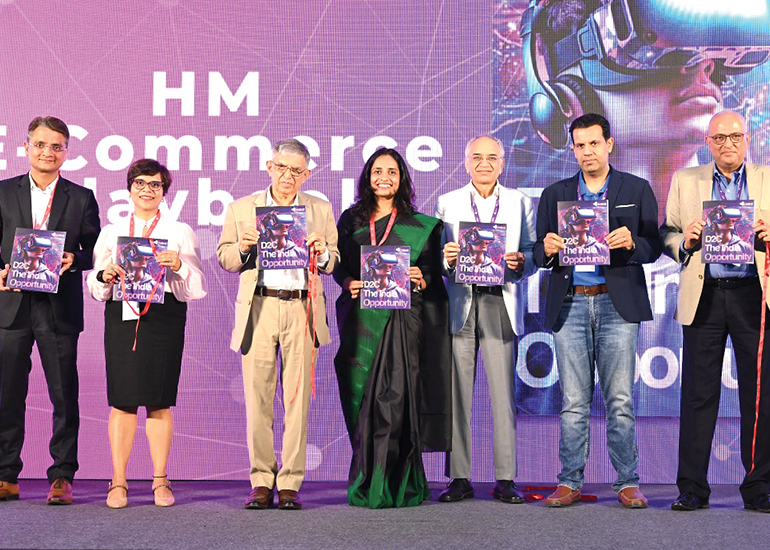The brand as an amalgam of product, concept, idea and narrative is what gains reputation.
The gloss and veneer of a favourable reputation is a precious thing. It is what is referred to as ‘that immortal part of myself’ by Shakespeare. Devoid of the favourable impression and repute, what remains is inconsequential.
Brand management dictates a set of prescribed activities. Done right, it yields awareness, approval, sales and share. But stellar performance doubled with higher esteem is gold dust. Not everyone gets it. Its alchemy is shrouded in mystery. Why brand image waxes and wanes even for ubiquitous brands is not understood or deconstructed enough. When on a high trajectory, brand belief can reach the innermost recesses of our minds. When discarded, it becomes cold and passé’.
As a knowledge discipline, brand management will need to evolve by roaming across diverse often unrelated fields of knowledge. This deliberate pluralism of context can help to build the cognitive diversity and cultural complexity required to understand brand esteem and repute. The routine will not help. A kaleidoscopic eclecticism is demanded. It should encompass sociology, economics, communication, cognition, anthropology, semiotics and other fields of learning.
Since messaging riding media is often misconstrued as the bulk of brandbuilding, let me also address informational cascades - Less said is better. Noise erodes brand persona.
Turn for a minute to the two parts we have been taught regarding brand benefits – the emotional and functional. Let us knock off functionality here as an objective but merely hygiene criterion. To be good is ‘par for the course’. It is not an esteem builder. Brand halo is not explained without emotion in the mix. Even the social transmission of brand esteem is about a propensity to like it, be proud of it and celebrate it but not about its rational attributes at all. Emotional conduits to esteem are sub-rational and non-rational.
The matter is made more complicated by the fact that brand life-cycle and consumer lifespans are not on the same scale. A brand may live 200 years and prosper or it may attain fame and be finished in a matter of a few years. The sociologist Norbert Elias had developed a theory on the rate of change of social norm linked to the cycle of evolution. This evolution is not merely biological but also societal. Figurations, modes of consumption, normalized activity – all these create need, consumerism and esteem. The rational process of esteeming repute is impossible to codify. That halo, esteem, fame is beyond calculation of self-interest.
 This also means brand esteem is intimately linked to social esteem as well as to vanity and contempt. For example, one society may value technology whereas another may value craftsmanship. One may chase material exhibitionism, the other may revere erudition. This discipline is phylogeny, which refers to ‘the evolution of traits at the level of a societal collective’.
This also means brand esteem is intimately linked to social esteem as well as to vanity and contempt. For example, one society may value technology whereas another may value craftsmanship. One may chase material exhibitionism, the other may revere erudition. This discipline is phylogeny, which refers to ‘the evolution of traits at the level of a societal collective’.Lastly, we move to the task of communicating merit, esteem, haute stature. As early as in 1899, in The theory of the Leisure Classes, Thorstein Veblen had said that ‘consuming is an act of status building’. What X does by consuming is to signal that he has means and merit. The interaction of consumption with personal belief leads to something bigger than the consumer and the brand (Think of brand ambassadors, influencers and communities). Much of what makes repute is empirically unobservable. It is flourishing mostly in the mind and imagination. Of course, cognition matters. Common acknowledgement heightens esteem. But there is always bespoke merit. There is always higher ground. Everyone who cares for music does not decipher classical music. Likewise, everyone who perceives signs is not decoding it fully. A story well known to you may be totally unfathomable when narrated in another language. A deep scar on someone’s face may convey physical violence but not that the person is an aggressor or a victim. That we deduce. A thick accent will tell us that folks are American, Australian or English. But, it is no reflection on their ability to speak English fluently. That assumption triggers in our mind.
Therefore, judgement, esteem, repute happens in other people’s heads. It builds on intrinsic merit but may not be reliant on it exclusively.
A checklist on the matter as we close this article:
• Repute is beyond tangibles. It is always coupled with emotion. However, it lifts above controllable factors and goes into the collective mass as lore.
• Esteem is perpetually in a flux. It is always dynamic. Waxing and waning.
• Be unintended in your acts and repute can be damaging. Be too controlling and repute gets stultified.
• It is like a flow of current or fluid. A reservoir is no guarantee of additional social capital.
• Be sharp and controlled in communication. Less said is better. Be coherent and eliminate noise.
• It is more important for brand owners to know what they are not as a brand than to know what they stand for.
• Be consistent. Reputation is like a postal small savings account. Keep depositing.
• Honour yourself as a brand. The judgement of others will follow.
(Shubhranshu Singh is a marketer who writes regularly on brands and brand-building)























